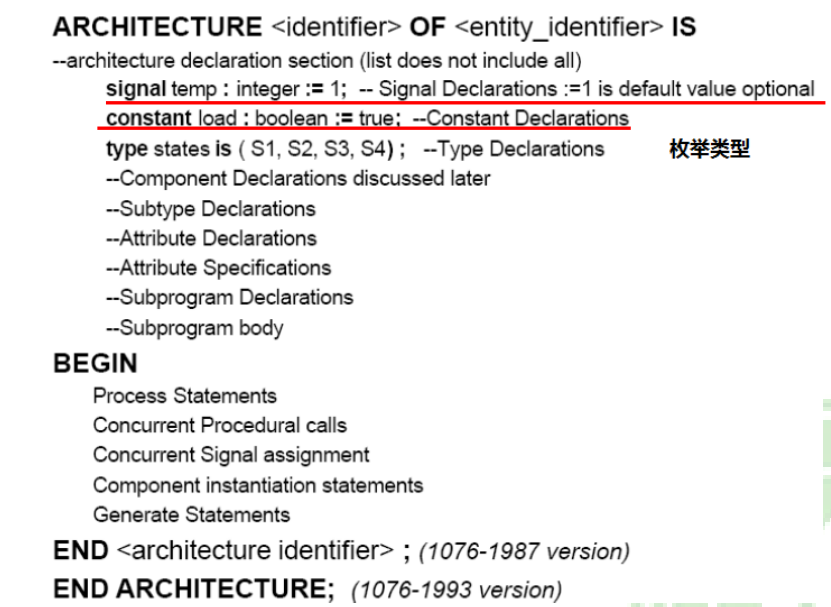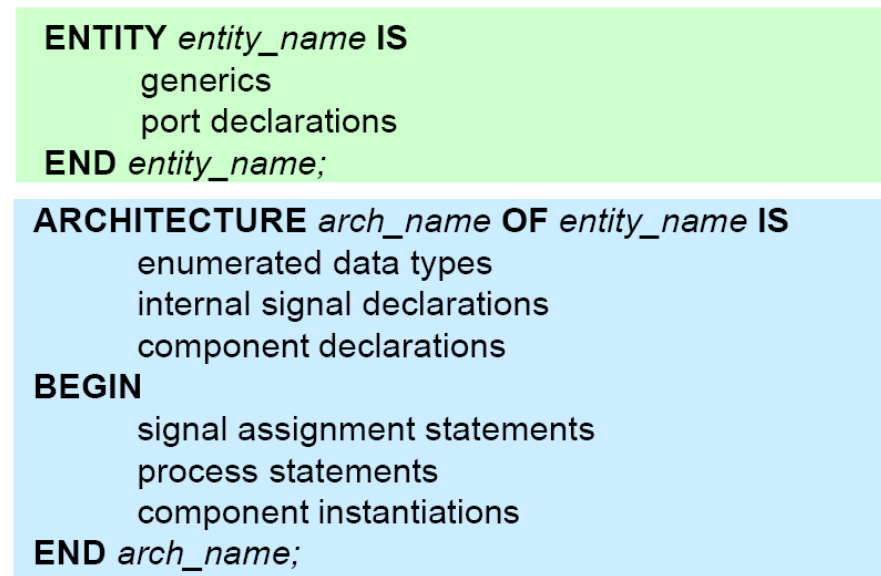VHDL设计模型
数据流模型:直接使用基本门和扩展门描述
行为模型:通过输入输出响应描述
结构化模型:通过低级器件的内联实现
VHDL程序结构
Entity(实体)
Architecture(结构体)
Configuration(配置)
Package(包)、Library(库)
Entity(实体)
Entity实体定义格式:
Entity <entity name> is Generic Declarations Port Declarations End Entity <entity name>
Entity name :
字母为开头,其余可由字母、数字、下划线组成。
类属声明(Generic Declarations):
作用:用于模型传递信息。
类属里常量声明格式:
constant 常量名:数据类型 := 设定值;
数据类型:integer,time,string
Generic (N : integer := 16 )
端口声明(Port Declarations)
定义格式:
<Class> Object_name : <Mode> <Type>;
<Class> : Signal , (Constant , Variable)
<Mode> :输入方向,in(输入),out(输出),inout(双向),buffer(输出、可反馈)
<Type> :数据类型,如[ std_logic , std_logic_vector (7 downto 0) ]
Architecture(结构体)

